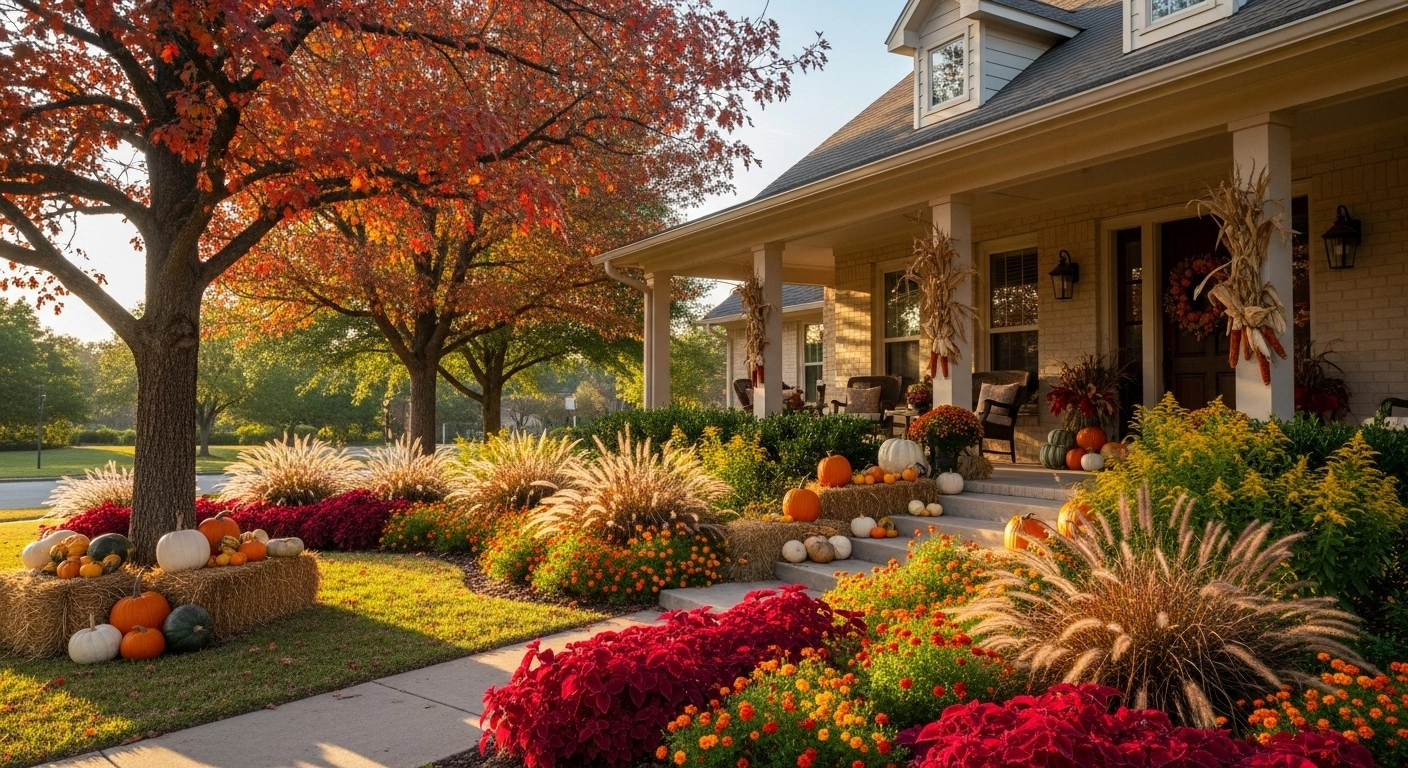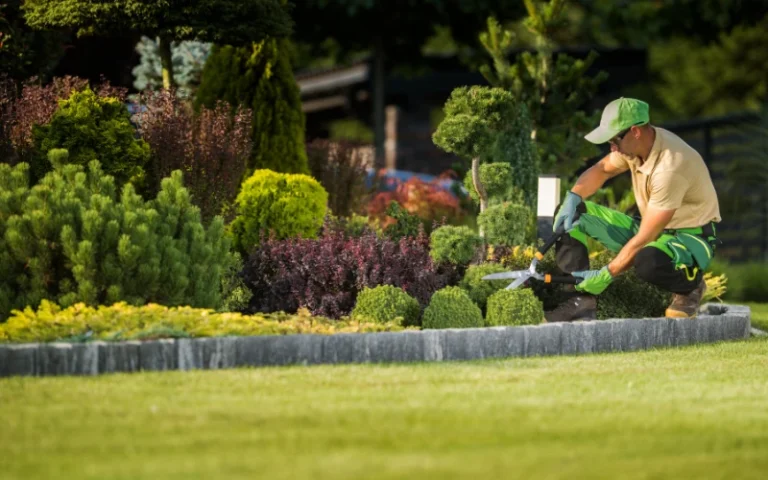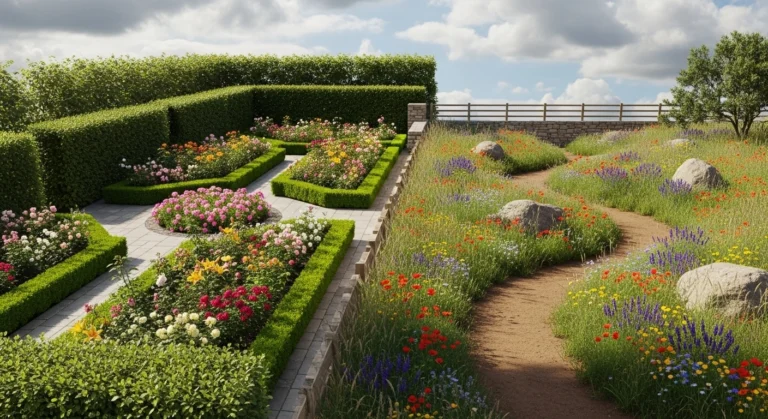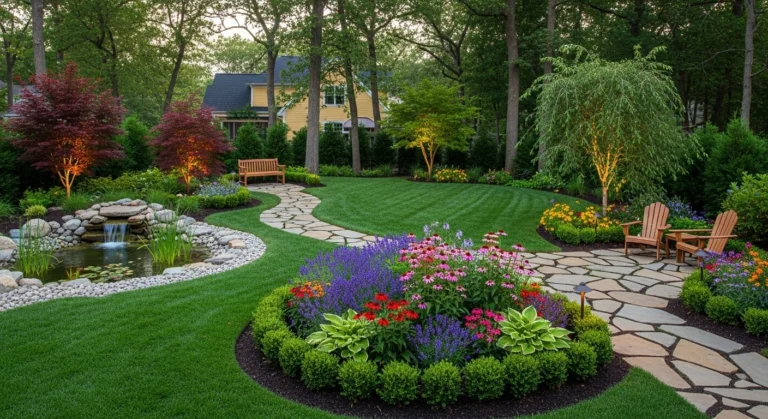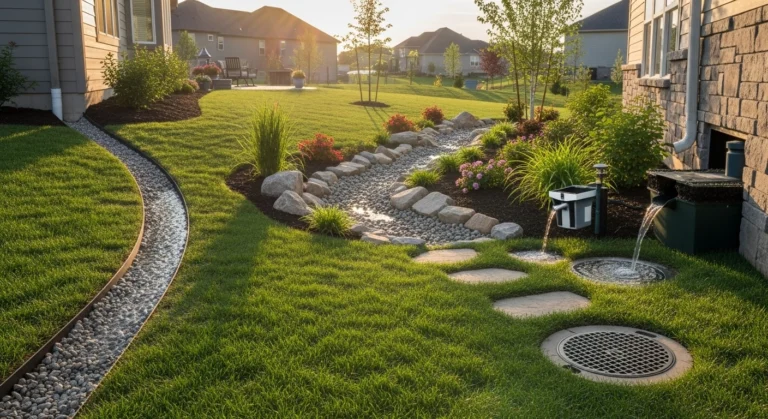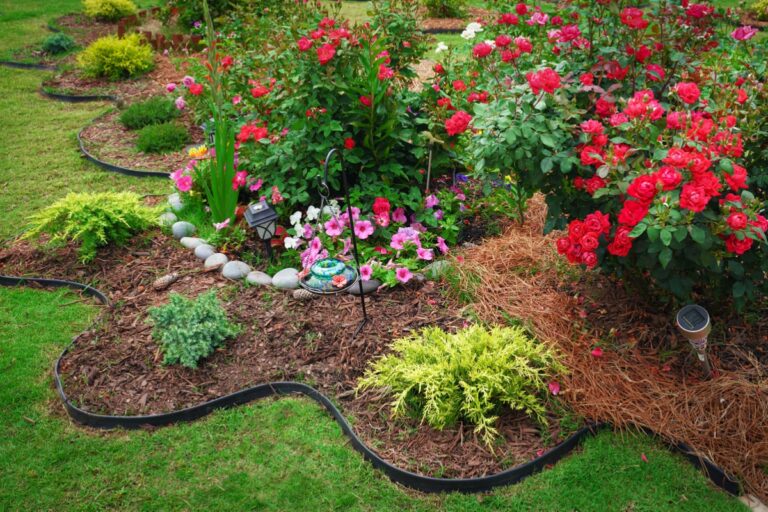It’s October in Lubbock, and while your neighbors are already thinking about holiday decorations, you’re staring at your landscape wondering if those brown spots are normal fall dormancy or signs of problems that’ll haunt you come spring. The reality is, most homeowners treat fall as the end of gardening season – raking leaves, putting away tools, and essentially abandoning their outdoor spaces until the first warm day next year. This “set it and forget it” approach might feel natural after battling West Texas summer heat, but it’s actually setting you up for expensive surprises and disappointing results when growing season returns. After watching countless Lubbock families struggle with poor spring emergence, winter damage, and landscapes that never quite reach their potential, I can tell you that fall neglect is one of the costliest mistakes homeowners make with their outdoor investments.
Here’s what I’ve learned through nearly two decades of West Texas gardening – fall isn’t the end of your landscape year, it’s actually the foundation for next year’s success. The work you do (or don’t do) during these cooler months directly determines how well your plants survive winter stress, how quickly they bounce back in spring, and how resilient they’ll be during next summer’s heat waves. Our Lawn Care Lubbock approach treats fall as the most important preparation season of the year, when smart investments of time and effort pay dividends for months to come. Think of it this way – fall preparation is like putting money in a savings account that compounds over the winter and pays out big when spring arrives. The homeowners with the most gorgeous landscapes in April aren’t the ones who work hardest in spring; they’re the ones who worked smartest the previous fall.
Why Fall Preparation Makes or Breaks Next Year’s Landscape
Fall weather in West Texas creates unique opportunities that don’t exist during any other season – cooler temperatures reduce plant stress, occasional rainfall provides natural moisture, and plants are naturally programmed to focus energy on root development and nutrient storage. This biological programming means that fall interventions have amplified impact compared to the same efforts during other seasons. Plants are literally preparing themselves for winter survival and spring emergence, and working with this natural cycle maximizes your results.
The economics of fall preparation are compelling when you look at the numbers over multiple seasons. Homeowners who invest in comprehensive fall care typically spend 40% less on spring plant replacement, pest control, and emergency repairs than those who skip autumn preparation. More importantly, their landscapes reach peak appearance 4-6 weeks earlier in spring because plants emerge from winter healthier and more vigorous.
Our Seasonal Landscape data consistently shows that fall-prepared landscapes show 60% better winter survival rates and significantly faster spring recovery compared to neglected properties. The difference comes down to understanding that plants don’t just shut down for winter – they’re actively preparing for next year’s growth, and you can either help that process or hinder it.
Essential Fall Tasks for Landscape Success
Soil Health and Root Zone Preparation
Fall soil work sets the foundation for everything that happens next year, and it’s absolutely the most important task you can tackle during autumn months. After months of summer heat, compaction, and stress, your soil needs rehabilitation before winter sets in. This is when you can make amendments that will slowly improve soil structure during winter months, giving plants the best possible foundation for spring growth.
Start with a comprehensive soil assessment that goes beyond simple pH testing. Check for compaction issues by trying to push a long screwdriver into various areas – if it won’t penetrate easily, you’ve got problems that need addressing. Look for drainage issues in low-lying areas where water tends to collect during fall rains. These problem spots often become disaster zones during winter freeze-thaw cycles if not corrected.
Your fall soil improvement action plan:
- Add 2-3 inches of quality compost to all planting beds and work it into the top 6-8 inches of soil
- Aerate compacted lawn areas using core aeration to improve root penetration and water infiltration
- Apply organic matter around trees and shrubs to insulate roots and provide slow-release nutrition
- Address drainage problems now, before winter moisture creates bigger issues
The beauty of fall soil work is that you have time on your side – amendments can slowly integrate during winter months, creating ideal growing conditions by the time spring planting season arrives.
Strategic Plant Care and Winter Protection
Plant preparation in fall determines which of your landscape investments survive until spring and how quickly they recover when growing season returns. This isn’t just about protecting tender plants from freeze damage – it’s about positioning all your plants for optimal winter survival and vigorous spring emergence. Different plant types have varying needs, and understanding these differences prevents both over-protection and under-protection mistakes.
Established trees and shrubs need deep watering and root zone care before winter dormancy sets in. Apply water slowly and deeply to encourage roots to grow deeper, where they’ll be better insulated from temperature extremes. This is also the ideal time for mulching around woody plants – fresh mulch provides insulation and slowly releases nutrients as it decomposes over winter.
Perennials require specific cut-back timing that varies by species and your specific goals. Some perennials, like ornamental grasses and sedums, provide winter interest and should be left standing until spring. Others, like hostas and daylilies, benefit from being cut back after the first hard frost when foliage naturally dies back.
Fall plant care essentials:
- Deep water all plants before ground freezes – winter desiccation kills more plants than cold temperatures
- Mulch tender plants with 4-6 inches of organic material for root insulation
- Wrap or protect marginally hardy plants using burlap or specialized plant covers
- Avoid late-season fertilization that can stimulate new growth vulnerable to freeze damage
The goal is helping plants enter dormancy gradually and completely rather than being shocked into winter by sudden temperature drops or inadequate preparation.
Lawn Care for Winter Survival and Spring Success
Fall lawn care in West Texas is all about building resilience for winter stress and positioning grass for explosive spring growth when conditions improve. Many homeowners make the mistake of treating fall as the end of lawn care season, but grass plants are actually quite active during autumn months, developing root systems and storing energy that will fuel next year’s growth.
Fertilization timing is absolutely critical for fall lawn success. Apply a winterizing fertilizer that’s higher in potassium and lower in nitrogen – this combination helps grass plants build cell strength for freeze tolerance while avoiding late-season growth that’s vulnerable to cold damage. The ideal timing is 6-8 weeks before your first expected hard frost, usually mid to late September in our area.
Overseeding cool-season areas should happen now if you’re trying to establish fescue or other cool-season grasses in shaded or protected areas. Fall seeding gives grass time to establish before winter dormancy and positions it for strong growth when spring arrives. Warm-season grasses like Bermuda and buffalo grass should not be seeded in fall – wait until next spring for those varieties.
Leaf management becomes crucial for maintaining lawn health through winter months. While a light layer of chopped leaves can actually benefit soil, thick accumulations block sunlight and create conditions for fungal diseases. Either remove excess leaves or chop them finely with your mower so they can decompose and feed the soil.
Garden Bed Cleanup and Preparation
Fall garden bed preparation sets the stage for easier spring planting and better plant performance throughout the next growing season. This is your opportunity to clean up disease issues, improve soil structure, and plan for next year’s plantings while weather conditions are ideal for outdoor work. The key is balancing thorough cleanup with preserving beneficial elements that support wildlife and soil health.
Remove diseased plant material completely to prevent overwintering of fungal and bacterial problems that will resurface next year. Tomato and pepper plants, roses with black spot, and any plants that showed signs of disease during the growing season should be completely removed and disposed of – don’t compost diseased material unless you have a hot composting system that reaches pathogen-killing temperatures.
Preserve beneficial plant material that provides winter habitat and food for beneficial insects and birds. Native wildflower seed heads, ornamental grass plumes, and sturdy perennial stems can stay in place until spring cleanup. These elements provide visual interest during winter months and support wildlife that helps control pest populations.
Your fall garden bed checklist:
- Clear annual vegetable and flower beds of spent plants and weeds
- Divide overcrowded perennials and replant divisions or share with neighbors
- Plant spring-blooming bulbs now for early season color next year
- Apply fresh mulch to suppress weeds and insulate plant crowns through winter
Fall bed preparation is an investment in next year’s success – time spent now pays dividends in easier maintenance and better plant performance throughout the growing season.
Timing Your Fall Tasks for Maximum Impact
Fall task timing in West Texas requires flexibility because our weather patterns can be highly variable from year to year. Unlike regions with predictable seasonal transitions, we might experience extended summer-like conditions into October or early cold snaps that arrive without warning. Learning to read natural signals rather than relying solely on calendar dates ensures your fall work happens at optimal times for plant benefit.
Watch soil temperature rather than air temperature for timing critical tasks like fertilization and planting. Soil temperatures remain more stable and give you better guidance for when plants are truly entering dormancy. When soil temperatures consistently drop below 60°F, most plant activity slows significantly, marking the transition into winter preparation mode.
First frost predictions help determine protection timing for tender plants and final harvests from vegetable gardens. In Lubbock, our average first frost occurs in late October to early November, but this can vary by several weeks depending on yearly weather patterns. Have protection materials ready but don’t install them too early – plants benefit from gradual hardening off as temperatures slowly drop.
The optimal fall work window typically spans from mid-September through mid-November, but specific tasks have narrower timing requirements. Seed planting and fertilization work best early in this window, while protection installation and final cleanup can wait until later in the season.
Preparing for West Texas Winter Extremes
West Texas winters bring unique challenges that require specific preparation strategies different from recommendations you’ll find in general gardening guides. Our combination of low humidity, intense sun, temperature extremes, and high winds creates conditions that can damage even cold-hardy plants if they’re not properly prepared. Understanding these specific stressors helps you provide the right protection for your landscape investments.
Winter desiccation causes more plant damage here than actual cold temperatures in most years. Plants continue to lose moisture through their leaves and bark during winter, but frozen or dry soil prevents them from replacing that moisture. This is why deep fall watering and wind protection often matter more than insulation from cold.
Mulching strategies need to account for wind – lightweight materials like straw or leaves can blow away during our winter wind events, leaving plants unprotected when they need it most. Heavier organic mulches like wood chips or shredded bark stay in place better and provide more reliable protection throughout the season.
Winter preparation specifics for West Texas:
- Apply anti-desiccant sprays to evergreen plants to reduce moisture loss
- Install windbreaks around vulnerable plants using burlap or landscape fabric
- Mulch heavily around marginally hardy plants with 6+ inches of organic material
- Wrap tree trunks to prevent sun-scald damage on thin-barked species
The goal is creating a microclimate around your plants that moderates the extremes of our regional winter conditions.
Planning Next Year’s Improvements During Fall
Fall planning time allows you to evaluate this year’s successes and failures while the growing season is fresh in your memory. This reflection period is invaluable for making strategic decisions about plant replacements, layout changes, and system improvements that will enhance your landscape’s performance and your enjoyment of it.
Document what worked and what didn’t through photos and notes that will guide next year’s decisions. Which plants thrived despite Summer Landscaping challenges? Which areas consistently required more maintenance than you wanted to provide? Where did you wish you had more color, shade, or screening? This information becomes invaluable when planning next year’s improvements.
Fall is ideal timing for major landscape changes that benefit from winter establishment time. Tree and shrub planting, bed redesign, and irrigation system installation all work better when plants have months to establish before facing summer stress. Our Landscaping Services team schedules most major installation work during fall months for exactly this reason.
Budget planning for next year’s projects can happen now while you have a clear picture of what your landscape needs. Spreading major expenses across multiple seasons makes improvements more affordable and allows you to prioritize the changes that will have the biggest impact on your outdoor enjoyment.
Common Fall Preparation Mistakes to Avoid
Premature cleanup often eliminates beneficial elements that your landscape needs for winter survival and wildlife support. The urge to have everything “tidy” before winter can lead to removing plant material that provides valuable habitat and food sources for beneficial insects and birds that help control pest populations.
Over-fertilization with nitrogen late in the season stimulates new growth that doesn’t have time to harden off before cold weather arrives. This tender growth is extremely vulnerable to freeze damage and can actually increase winter plant mortality. Stick to low-nitrogen, high-potassium fertilizers designed specifically for fall application.
Inadequate watering before dormancy sets plants up for winter desiccation damage that may not become apparent until spring. Plants need to enter winter with adequate moisture reserves, especially in our dry climate where winter precipitation can be minimal and unreliable.
Procrastination on time-sensitive tasks like bulb planting and tree care can mean missing optimal timing windows that don’t return until next year. Unlike spring tasks that have some flexibility, many fall activities have hard deadlines imposed by weather and plant biology.
Finally, attempting too much too fast often leads to burnout and incomplete preparation. Break fall tasks into manageable chunks spread over several weekends rather than trying to accomplish everything in one marathon session. Quality preparation takes time, and rushing through tasks often means missing important details that matter for plant survival.
Connecting Fall Work to Spring Landscape Success
The work you do this fall directly impacts how smoothly your spring preparation goes and how quickly your landscape reaches peak performance next year. Well-prepared plants emerge from winter healthier and more vigorous, requiring less intensive care and showing better resilience throughout the growing season.
Fall soil improvements create ideal conditions for spring planting projects and reduce the amount of bed preparation needed when you’re eager to get new plants in the ground. Compost and organic matter added in fall have months to integrate with existing soil, creating the improved growing medium that makes spring gardening more successful and enjoyable.
Plant health investments made now pay dividends in reduced spring maintenance requirements and better overall landscape performance. Healthy plants that survive winter stress intact need less spring intervention and reach their full potential faster than plants that barely survive or require replacement.
The integrated approach to seasonal care that connects fall preparation with spring success and summer survival creates landscapes that perform better while requiring less intensive management. This long-term thinking approach transforms landscape maintenance from seasonal crisis management to strategic stewardship that compounds benefits over time.

